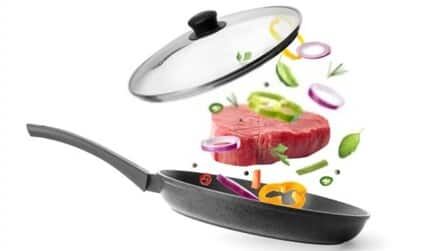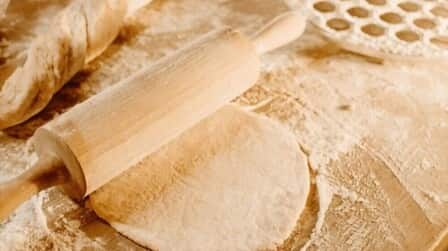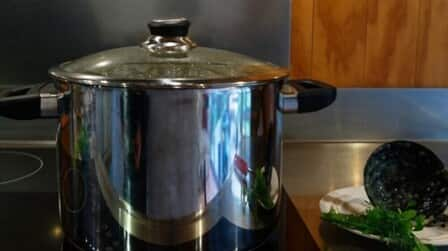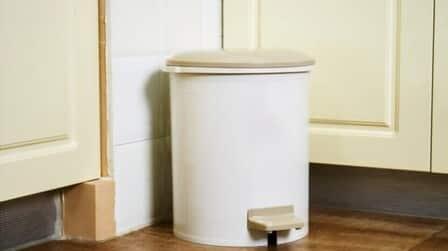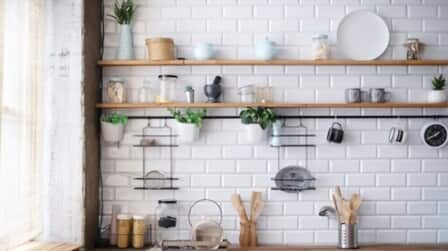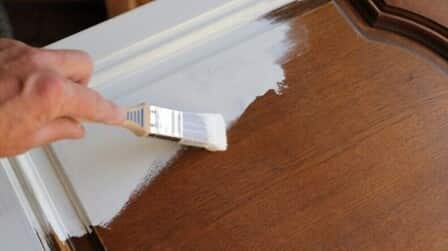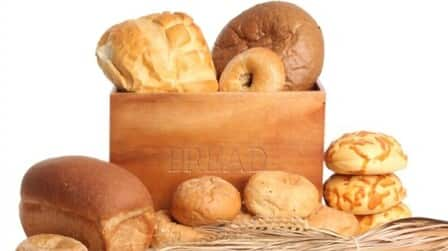Is the smallest pressure canner better than a big model? It’s better when you don’t need a large amount of canned food. And it works best for a small kitchen or limited space.
Do you need to buy a pressure canner to preserve food? However, you don’t can your food regularly and don’t consume a large amount of preserved food, right? In this case, the smallest pressure canner is the best choice. It is large enough for canning a few cans or jars at once. Moreover, sometimes your kitchen counter doesn’t withstand a heavy unit.
Here are the smallest pressure canners you can buy in 2025:
- Budget Option (Stovetop Pressure Canner): Barton
- Easy To Clean (Stovetop Pressure Canner): Zavor
- Lightweight (Stovetop Pressure Canner): All American
- Easy To Use (Electric Pressure Canner): Nesco
- Durable (Electric Pressure Canner): Emeril Everyday
- Quiet (Electric Pressure Canner): SharkNinja
| 6 Smallest Pressure Canners | ||
|---|---|---|
Budget Option | Barton
| |
Easy To Clean | Zavor
| |
Lightweight | All American
| |
Easy To Use | Nesco
| |
Durable | Emeril Everyday
| |
Quiet | SharkNinja
| |
Budget Option: Barton

- Lightweight
- Fast to cook and easy to use
- Well-built and clean look
- Secure handle
- Good heat distribution
- Hard to close the cover
With a tight budget, can you buy a safe and functional pressure canner?
Yes, if you don't require a model that is big enough for a large group of people.
I am sure that you are not. You are looking for a small pressure canner and this product can bring benefits of a compact unit. Thanks to a small size - 6qt, you can save a lot of space on your kitchen counter.
| Barton Specifications | |
|---|---|
Weight | 3.63 Pounds |
Dimension | 10"D x 16.75"W x 9"H |
Materials | Aluminum |
Capacity | 6 Liters |
Highlight Features | Customized silicone seals |
The high-quality Barton Stovetop Pressure Canner is inexpensive, but very functional to use.
Easy To Clean: Zavor

- Easy to clean and use
- Fast to cook
- Safe to use
- Difficult to close and open properly
The Zavor Stovetop Pressure Canner has an easy-to-clean design that doesn't have complicated details, so there isn't the buildup of dirt and dust. You can easily wipe down the smooth surface with a cloth.
When you are in need of cleaning the inside, just choose the “Clean” position on the intuitive pressure regulator knob. It will remove the knob so that you can clean it easier.
This model has a dishwasher-safe steamer basket, so you can take it out from the pot and put it in your dishwasher. Thanks to this way, you can save more time for other cooking tasks.
| Zavor Specifications | |
|---|---|
Weight | 10.1 Pounds |
Dimension | 10.7"D x 17.7"W x 10.4"H |
Materials | Stainless steel |
Capacity | 10 Quarts |
Highlight Features | Automatic locking handle Intuitive pressure regulator knob |
The Zavor Stovetop Pressure Canner takes less time and effort on your part for cleaning because of its simple design.
Lightweight: All American

- Safe on electric stove
- Beautiful
- Easy to use
- Lightweight
- Expensive
If your family uses a glass stove, I highly recommend the All American Stovetop Pressure Canner. The latter is lightweight enough so that it won’t cause scratches on the glass stove’s smooth surface or break your stove. In spite of a bulky design, it weighs only 14.8 pounds.
| All American Specifications | |
|---|---|
Weight | 14.8 Pounds |
Dimension | 12.7"D x 13.2"W x 12.2"H |
Materials | Aluminum |
Capacity | 9.94 Liters |
Highlight Features | Metal-to-metal sealing system Steam-tight seal Easy-to-read steam gauge Easy-to-clean satin finish Precision machined regulator weight Sturdy phenolic top handle |
The All American Stovetop Pressure Canner doesn’t add too much pressure on your delicate glass stove.
Easy To Use: Nesco

- Easy to use
- Concise directions
- Smooth to close
- Removable inner pot
- Well-designed
- Hard to clean the drip catcher
If you are a first-time user, you should choose an easy-to-use model. The Nesco electric pressure canner will give you the first simple experience.
Although it's effortless to use, it's not a simple product with basic features. There are many functions that allow you to take advantage of them when using this machine.
Apart from canning, you also have other cooking modes such as slow cooking, steam cooking, and pressure cooking. Simply choose what you want on the digital display and you will have consistent results, no matter how many times you use this pressure canner.
| Nesco Specifications | |
|---|---|
Weight | 17.6 Pounds |
Dimension | 15"D x 15"W x 14"H |
Materials | Stainless steel |
Capacity | 8.99 Liters |
Highlight Features | Multi-functional Multiple Built-in Safety Features Digital display Non-Stick Aluminum Inner Pot |
Durable: Emeril Everyday

- Good price
- Easy to cook and clean
- Simple instruction
- Versatile
- Complicated to use
If you plan to put your pressure canner in an area where it usually has light and heavy collisions, make sure that it is durable enough to withstand this impact. In this case, you will appreciate the high durability of the Emeril Everyday electric pressure canner.
However, its durable construction makes the complete model bulkier and heavier. If you are okay with this thing, it is a worthy investment.
| Emeril Everyday Specifications | |
|---|---|
Weight | 28.6 pounds |
Dimension | 22.6 x 17.91 x 16.5 inches |
Materials | Stainless steel |
Capacity | 8 Quarts |
Highlight Features | All-in-one programmable pressure cooker 44 built-in cooking functions Easy-to-read LCD Display |
The Emeril Everyday Electric Pressure Canner is so durable that it can withstand light and heavy impact.
Quiet: SharkNinja

- Versatile
- Easy to clean
- Heavy
If you usually use your pressure canner in the morning when someone is sleeping or in the afternoon when everyone is taking a nap, you will want to use a quiet SharkNinja electric pressure canner. This type of model won’t produce noise that disturbs your kids who are focusing on their homework and your partner who is working from home. According to customers, no matter which function they use, this machine works quietly.
| SharkNinja Specifications | |
|---|---|
Weight | 25.8 Pounds |
Dimension | 14.25"D x 16.75"W x 13.1"H |
Materials | Plastic, Metal, Rubber |
Capacity | 6.5 Quarts |
Highlight Features | TenderCrisp Technology UL safety certification |
You can use the SharkNinja Electric Pressure Canner anytime in the day because it won’t produce noise, disturbing other people.
How To Choose The Smallest Pressure Canner?
When Should You Choose A Small Pressure Canner?
Pressure canners vary in many sizes. However, there is no need to buy a large-capacity model, if your family is small and all members rarely eat home-canned foods.
Instead, consider a small pressure canner that can hold at least 4 x 1 liter (US quart) jars. Normally, 10 quarts are the minimal size to hold this size of the jar. According to USDA safety regulations, any pressure canner should hold at least 4 quart-sized jars for a safe canning process. In this case, you had better pick a 12-quart pressure canner.
Do You Have A Glass Stovetop?
The glass stove can't withstand a heavy pressure canner. So, if you don't want to ruin and break it, it's better to choose a lightweight unit.
What Kind Of Pressure Gauge Should You Choose?
There are 2 kinds: dialed gauge and weighted gauge.
The dialed gauge comes with a dial to monitor the pressure in the canner. It requires you to keep an eye on the readout to ensure that the canner is staying at the optimal range. If you choose this kind, make sure that it is checked at your local county extension office every year as long as the dial shows the correct PSI (pounds per square inch of pressure) in all cases.
The weighted gauge will alert you with hisses, jiggles, and rocks back and forth when the pressure reaches a desired level. So, it's easy and safe to use.
What's A Safe Pressure Canner?
The pressure canning method can kill microorganisms thanks to the combination of heat and pressure. For the safety and effectiveness, make sure that your pressure canner meets NCHFP guidelines and has a UL approval symbol.
Which Material Is The Best?
Aluminum
Although this material is cheaper, it gets pitted on the surface. You still have a brilliant performance, but its look is not good. Moreover, aluminum will also get oxidized. In some cases, you can treat the discoloration by applying a few tsps of white vinegar on the surface of the pot.
Stainless Steel
A stainless steel pressure canner costs you more money, but it's pitting-resistive. You can keep it at a peak condition for decades. However, this material conducts heat less evenly. For the best performance, you should invest in a stainless steel pressure canner with an aluminum base. The latter can spread the heat more evenly.
Which Brands Make The Smallest Pressure Canner?
Barton
Barton is famous for a wide range of high-quality indoor and outdoor furniture, appliances, and accessories at reasonable price
FAQs
What sizes do pressure canners come in?
Pressure canners vary in size. They can range from 10 to 41 Quarts.
What's the difference between a pressure cooker and a pressure canner?
Both the pressure cooker and pressure canner have heavy bodies and locking lids, so they are designed for trapping steam inside an airtight container, which are ideal for pressure cooking. However, they are still different.
The pressure cookers are mainly used for cooking solid pieces of food such as meats, vegetables, and other ingredients quickly. The buildup of pressure inside the pot produces steam to increase the temperature of liquid in the pot. This helps you soften and tenderize hard vegetables and tough meats quicker. Besides, this device can brown and caramelize ingredients.
Meanwhile, pressure canners are designed for canning food such as fruits, meats, and low-acid vegetables. Although this type of kitchen appliance also varies in size, it is bigger than pressure cookers.
Why?
It is used for holding jars and cans of food while heating. You can monitor the pressure inside the pot through a weight or dial gauge. A pressure canner can raise the heat to 250°F or more for even jars and cans in higher elevations. In particular, it can sustain this temperature level for a long time with less fluctuations of temperature.
It is the reason this model can kill harmful microorganisms such as bacteria and fungi which will spoil your food. People buy a pressure canner to preserve low-acid foods without causing botulism development.
Can I repurpose a used pressure canner? Are they safe?
Yes. It is safe to repurpose a used pressure canner, but you must make sure that it’s in a good condition.
How to use a pressure canner?
Ensure that all of your canning jars are clean by rinsing them in hot water or running them in a quick cycle in your dishwasher because you wouldn’t want to put your food in dirty jars and cans. Although cleaning jars and cans is essential, there is no need to sterilize them. The pressure canning process will produce high heat to do this.
Although you don’t have to completely cover all jars and cans inside with water, make sure that you fill at least 2-3 inches of water.
Note: If you let the water run out while canning, it can seriously damage the canner.
If your model has a rack, put it in the canner's bottom, then place all of your sealed and filled canning jars on the top of that.
Put the lid on the canner then close. Remember that each canner can have different close mechanisms.
Heat the canner on the stove burner with high heat. At this point, don’t mount the weighted gauge on the lid of the canner.
Set the timer for 10 minutes after the pressure vent has released steam for about 10 minutes. Or you can recognize when it is the right time through signs of sputtering, hissing, and the appearance of droplets on the outside.
Check your canning recipe because different foods require different pounds of pressure. Normally, no matter what your recipe is, 15 pounds of pressure is good to process food at over 2000 feet above sea level. What’s more, different foods also require different processing time. For example, while beets require 30 minutes, meat and stew take about 60 minutes for processing.
Put the weighted gauge at the proper setting over the pressure vent top. After completing the venting period, you can put the weighted gauge on the canner by using an oven mitt because the steam is hot.
Wait until the pressure is built in the canner. You can monitor this process slowly through the dial gauge.
After reaching the proper pressure, the weighted gauge will jiggle and rattle. At this time, you can set your timer (processing time) depending on your kind of food.
After completing the processing time, you can turn off the burner. Wait until it cools down its own, then you can safely remove the weighted gauge and canner when the dial gauge reads zero. Remember to wear a pair of oven mitts.
After the jars and cans of food are cooled completely, you can remove them, wash them gently, and dry them thoroughly. Before storing them into your pantry, make sure that they are sealed properly.
Note: You can apply a thin layer of olive oil to the metal-to-metal seal.
What are safety recommendations when using a pressure canner?
Each model has different instructions. And following the right direction can keep you safe when using a pressure canner.
Dirty jars and cans can make them badly sealed, so remember to clean them before using.
Depending on your kinds of food, there will be different recipes. Ensure to follow what you should do exactly. Don't improvise. For example, adding an ingredient beyond the recipe can cause an unexpected risk.
Don't can the following things:
Dairy
The fat content in dairy products will keep botulism spores - the biggest risk in food preservation.
Thick Purees
If the purees are thick, it can't heat the mixture up to the right temperature.
Flour/arrowroot/cornstarch
Never add these ingredients into your canned food if the recipe doesn't mention it. If not, it can thicken up the mixture to a point which the pressure and heat can't penetrate.
Conclusion
You should choose the smallest pressure canner when:
You need a small amount of canned food.
Your kitchen counter is not strong enough to put up with a heavy model.
Your kitchen is too small to store a big unit.
You don’t have a large budget for this kind of kitchen appliance.
Now, once you know what you really want, just make a purchase and tell me about your decision by leaving a comment here.

